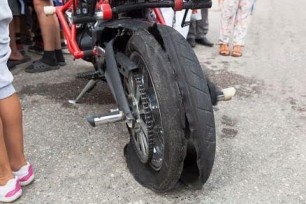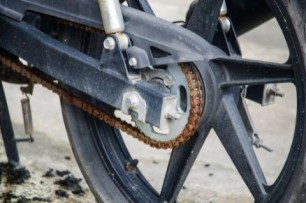General Insurance Blogs, Articles & Updates by - Magma HDI
Have us call you
- RENEW YOUR POLICY
- BUY NEW POLICY

Visit these top stargazing sites in India to spend memorable nights
Who hasn’t desired to spend a night beneath the stars? The beautiful sky appears to be a canvas painted with countless twinkling stars. Stargazing gains a special place in the bucket list of most travellers. And rightly so. Who wouldn’t want to see the starry night while enjoying a mesmerising atmosphere? If you are travelling with a group, a random jam session under the open starlit sky will melt your heart. It’s a sight to behold.
Where can you find such places with stars lined up? Don’t worry. We can help you plan your next trip to the sites that offer you this jaw-dropping experience. Let’s get started.
1. Rann of Kutch, Gujarat:
Rann of Kutch in Gujarat is one of the largest salt marshlands on Earth. It offers the best crisp and clear night sky views. It encapsulates almost six magnitudes of stars, easily visible to the naked eye. All in all, this place is heaven in India for all the astrophile and stargazers. The time from October to February is considered the best to visit these marshlands.
2. Pangong Tso Lake, Ladakh:
Ladakh is a dream destination for the majority of travellers. And now, the iconic Pangong Tso Lake is an even more compelling reason that adds a feather to the hat. It is regarded as one of the best stargazing views in the entire country.
The lake is situated at an elevation of 4,225 meters. The starry sky outlines enhance the mesmerising night view from this lake. Trekking opportunities are available where you can set up camps and experience the view of the gazillion stars. Visiting Pangong Tso Lake in Ladakh from May to September would be the wisest choice.
3. Coorg, Karnataka:
Coorg is one of the most beautiful hill stations one must visit while touring the state of Karnataka. The waterfalls, coffee gardens and the lush green views can calm your soul and give you the peace you crave in the hustle of city life.
Giving you glimpses of mountain peaks and starry sky outlines, Coorg offers the tourists and adventurers multiple opportunities to camp in the forests where the tall trees form beautiful canopies, and the stars shine through. And if you are solely visiting Coorg for stargazing, make sure you plan your trip from October to March.
4. Spiti valley, Himachal Pradesh:
Himachal Pradesh offers some of the most beautiful views and tourist locations in India. And the high altitude makes it a perfect spot for experiencing the serene night sky views and capturing the beauty of snow-capped peaks.
At an elevation of 4270 meters, Kibbar or Kyibar in Spiti valley is a well-known point in Himachal Pradesh, specifically for stargazing. The best time to visit Spiti Valley is in the winter.
Various other locations in India offer stargazing opportunities, such as Nubra Valley in Ladakh, Sonmarg in Jammu, and Kashmir, Kashid Beach in Maharashtra, Jaisalmer in Rajasthan, and Shaheed Dweep or Neil Island in Andaman and Nicobar Islands, etc.
We hope this list will help you plan your next trip-solo or with dear ones to the sites where stars bring energy into life. Spend memorable nights and gasp at the wonders space offers.
As you consider travelling, how about getting general insurance for your travel? You deserve some relaxing time where you do not have to worry about sudden, unprecedented circumstances that can ruin your trip. And now, explore your options and get the best online general insurance which would cover your travel insurance in the best ways possible.
Click HERE to know more about the benefits of online general insurance.
Disclaimer: The information provided above is for illustrative purposes only. To get more details, please refer to policy wordings and prospectus before purchasing a policy.

Here are a few tips for maintaining the optimum tyre pressure in two-wheelers
Tyres are the least talked about part of a bike and usually get tossed to the side. But it is crucial to check your two-wheeler’s tyres regularly because they go through a lot. Whether you are riding on a metal road or rough surfaces —they have to be able to hold their shape. But, quick-fix solutions like tyre pressure can do so much for your tyres.
Imagine riding your bike, and you realise there's a flat tyre. This can interrupt your ride due to the waste of time. Also, sudden faults in the tyres are potential risks to the rider's life and even damage the bike.
Tips for maintaining the optimum tyre pressure:
Taking care of your bike's tyres isn't a big task. If you remain a little attentive, it's possible to avoid any breakdown-related issues. However, a big problem that one needs to avoid is the accident and financial worries attached to it. To deal with these, consider buying insurance plans. Getting a 2 wheeler insurance policy is like buying a shield for your two-wheeler.
And luckily, there are four tips to help you avoid tyre-related accidents while riding your bike. Maintaining optimum tyre pressure is crucial to minimise mishaps on the road.
1. Are your tyres correctly positioned:
When checking your bike, you should always check the tyres to see if they are in the correct position. Also, check for any punctures as sharp objects such as glass can hamper the quality of tyres. Make sure to move the tyre forward and back to check the whole surface thoroughly.
2. Check the tyre pressure:
One of the best ways to protect your two-wheeler is to examine the air pressure. When inflating your tyres, you can extend their lifespan and improve handling. Make sure to check the air pressure before every ride. As the bike heats up, air pressure can change, and it is essential to keep track of the air pressure level for your bike.
3. Recommended air pressure:
Keeping your motorcycle's tyres at the recommended air pressure is essential. Ask the service centre or check your bike manual to know the recommended tyre pressure, and ensure you maintain it. Also, to avoid sliding on wet roads, make sure your tyres are in good shape. Check the treads for wear and make sure they are not bald. If there is a decrease in an inch or quarter bald track, you should consider replacing the tyres.
4. Avoid maximum inflation:
When filling your tyre with air, be mindful that the sidewall states the maximum pressure. The recommended amount is always lower than the maximum. Excessive air filling can cause considerable damage to the tyres and increase the probability of tyre burst, creating a life-threatening situation for the rider and fellow drivers around him.
With an increasing number of road accidents and fatalities in India, 2 wheeler owners must be well-protected from any unfortunate mishaps. So, make sure you get a 2 wheeler insurance plan, drive safely, and stress-free. Also, use the tips mentioned above to take the best care of your bike’s tyres and leave no scope for negligence.
Click HERE to buy the best 2 wheeler insurance.
Disclaimer: The information provided above is for illustrative purposes only. To get more details, please refer to policy wordings and prospectus before purchasing a policy.

Let's understand how a central locking system impacts a car's safety
Since its implementation, the central locking system has become one of the essential safety features in a car. It's a combination of electronic and mechanical components that only allow access to authorised individuals.
Earlier, central locking systems in automobiles used a compressed air mechanism with separate vacuum reservoirs that triggered the locks of all four doors when the key was inserted and turned in a lock. Today's systems use wireless or infrared control, which can activate the mechanism from a distance.
In today's post, we will look at the functioning of the central locking system and how it impacts a car's safety.
The four main components of a central locking system.
1. Actuator:
An actuator is an electric motor that controls the car's central locking system. This component is built into the door and consists of a combination of mechanical latches.
2. Transponder:
It is a system built into the key's bow that determines whether the correct key is being used. As the key approaches the ignition lock, the transponder code is read. When the correct code is scanned, the electronic immobiliser sends a signal to the engine to permit it.
3. Remote Controller:
Remote controllers are increasingly being used in all cars. They are designed to replace the function of the key systems completely. The remote control includes electronic circuitry that sends coded instructions via infrared rays to the receiver located inside the vehicle to permit a keyless entry.
4. Start and stop system:
Unlike traditional ways, which required a key to be inserted into the ignition lock to start the car, engines are now being started using keyless systems where a transmitter – also serving as the central locking controller – is scanned into a reader in the vehicle. Later, the engine is started by pressing a button.
Safety advantages of central locking systems:
• The driver has better control over all the doors. The central locking system allows drivers to lock or unlock all four doors by pressing a single button. This is very convenient since the driver doesn't have to worry about unlocked doors while the car is in motion.
• Since the code is digitally encrypted, it is tough to make duplicate keys.
• If your key is ever stolen, you can simply remove the access right from the software on your phone. It connects with the car's digital lock and terminates access rights. Some automobile manufacturers even allow removing the access remotely.
• In more sophisticated systems, the car's door automatically locks itself after reaching a specific speed limit. As a result, no one, especially toddlers, can open the door by mistake —this helps avoid serious accidents.
• In case of an accident, a central locking system smartly unlocks the door so that help can reach you without having to break anything.
What else assists post-car accidents? Comprehensive car insurance. You can claim all the expenses involved in repairing and servicing your car under your car insurance policy's scope
A central locking system is essential for a family vehicle in practical usage. The ease of access and security that it provides make life easier for all automobile owners. Having a central locking system in your car provides extra security and brings down your car insurance premium. All the reputed car insurance companies encourage car owners to adopt convenient and safe practices. So, go for a central locking system in your car to enjoy a wide array of benefits and deals that you shouldn't be missed out on.
Click HERE to buy car insurance in hassle-free steps.
Disclaimer: The information provided above is for illustrative purposes only. To get more details, please refer to policy wordings and prospectus before purchasing a policy.

Baby on Board? Why You Must Have a Child Seat
Children are full of energy, and therefore they tend to have a higher risk of being injured in a moving vehicle. Ensuring the maximum safety of your child is an essential part of parenting, and the same is applicable when you are travelling with your kid.
Especially if you have a toddler, you have a higher responsibility of ensuring their safety. Although Indian law has not made having a child seat mandatory, you as a parent can take numerous measures for your child. Ensuring the safety of your car and yourself is equally important as accidents, and unwanted situations occur uninvited. Search for online car insurance and buy one ideal for you if you haven't purchased the right insurance policy yet.
Here are five reasons why you must have a child seat.
1. Safer compared to holding the child in arms:
One of the common myths parents believe is that holding your baby in your arms will protect them better. However, when an unwanted situation arises, your arms may not be sufficient to hold your kid tightly.
2. Seat belts are not convenient for kids:
Irrespective of the car you own, all the seat belts are designed from the adult's body perspective. In an accident or when you pull a sudden break, this may result in the baby falling and getting injured. Child seats are comfortable, and they keep the baby safe from jerks and bumps.
3. Lack of concentration while driving:
Most parents are worried about what their child is doing in the back seat or whether they are safe when they do not have a child seat in the car. Parents constantly look at their children while driving, and this distraction can cause accidents. Having a child seat will ensure they do not move and are protected with a comfortable seat belt. This will help you to just concentrate on the road and your car.
4. Kids are incredibly active:
Kids are filled with energy most of the time. A baby can try to open the dashboard, attempt to open the door and injure themselves. A child seat will ensure your kids do not attempt to act unsafely.
5. A newborn should only travel in car seats:
The most common myth is that parents believe their newborn is highly fragile in a car seat. However, the truth is, they should only travel in a car seat. A child seat is designed in a way that ensures the safety plus comfort of the baby.
Things to know before picking the right child seat:
• Pick a seat that meets the safety standards set by the country. You can see this on the label of the child seat.
• Learn how to install the seat. The label has all the instructions, plus there will be someone in the store who will assist you or help with the first installation.
• Make sure to fill the product registration form. Furthermore, check out the warranty and the brand's name by doing a little research about it on the internet and checking the reviews. Since it's a question of your child's safety, be cautious while picking the right one.
There are professional companies involved in making a child seat with expertise and immense research background. If you are travelling with a baby, having a child seat should be your priority as a responsible parent. And, as a responsible owner, getting online car insurance should be the next thing on your priority list. Implement all these points, and then you are all set to go on joy rides with your child.
Click HERE to know more about an online car insurance policy.
Disclaimer: The information provided above is for illustrative purposes only. To get more details, please refer to policy wordings and prospectus before purchasing a policy.

Let's understand the importance of a consistent sleep routine for a healthy living
Be it the wealthiest man in the world or a celebrity singer of all time, we have heard influential and successful people talk about the importance of a good night’s sleep. Several studies have proved it humans need to rest for the mind and body to work at full potential the next day. The ignorance of sleep is not a healthy sign, yet, we are so caught up in the rat race that we end up compromising sleep.
A sound sleep is important to your personal and professional well-being. This article will highlight how and why a consistent sleep routine is necessary and what we can do to achieve the same.
1. Maintaining the body clock or the circadian rhythm:
A regular sleep routine is one way of ensuring the proper functionality of your body. The body’s heart rate and blood pressure follow the circadian rhythm. Circadian rhythms are physical, mental, and behavioural changes the body follows in a twenty-four cycle. When you sleep on time, your body automatically recognises the need to rest.
When you do this over a period of time, you start noticing changes such as more active brain activity in the morning, sleeping easily at night, and better digestion. Research has shown that people who stick to a sleep schedule perform better tasks and have better cognitive skills.
2. Better overall health:
People with erratic sleep schedules often find it challenging to go to rest and eventually oversleep. This is because the body fails to recognise the difference between exhaustion and sleep. Staying up late can leave the body and the brain exhausted. To combat this, the body overcompensates with sleep.
Midnight snacking is another unhealthy habit that people develop over time. Ideally, one should go to bed after two hours of dinner. Allow your body to have ample time to digest the food. We have often heard people talk about burning sensations in the morning. This happens when you lie down immediately after dinner, allowing the digestive juices to flow back up the oesophagus, causing an acid reflex.
Now, let us take note of a few ways to develop a consistent sleep routine for healthy living:
1. Set aside 8 hours from your schedule for an undisturbed night’s sleep. Going off to sleep and rising up at the same time is the first step to maintaining a healthy sleep cycle. Avoid snoozing the alarm. The extra five minutes after hitting the snooze will make you tired and lazy. Instead, wake up at the first ring of the alarm to feel fresh and rejuvenated.
2. Stick to light and non-greasy food options to avoid discomfort. Having dinner at least two hours before you sleep is ideal. Stick to light and non-greasy food options to avoid discomfort. Hot herbal tea is an excellent way to calm your body before bed.
3. Avoid using laptops, mobiles, or other electronic gadgets in the bedroom. The blue light from screens makes it difficult for people to fall asleep. A well-made bed, dark curtains, and night lights can help ease your sleep faster.
These are a few techniques that you can try out to maintain a disciplined sleep cycle. The important thing to remember here is that sometimes lack of sleep can result from inappropriate lifestyle choices or other latent health problems. Under such circumstances, it is best to visit a doctor.
Your doctor might suggest some medications or tests to help you with your concerns. A thorough full body check-up might help with the diagnosis of the problem. Invest in a health insurance policy with the best health insurance company in India to avoid losing your sleep over the expenses of check-ups and medicines.
Click HERE to know more about health insurance.
Disclaimer: The information provided above is for illustrative purposes only. To get more details, please refer to policy wordings and prospectus before purchasing a policy.

All the right moves to live five years longer
Living long is not a myth. There are plenty of ways to improve your life expectancy rate and improve the overall quality of your life. Since childhood, we have been hearing the adults guide us on our habits. That’s right; there is no rocket science behind adding those extra five years, but everything that your mother told you. Besides it, having health insurance is also a part of protection you need to consider, as it keeps you stress-free and allows you to focus on your well-being.
In this post, we will spotlight all the right moves giving you extra five years to enjoy life! Let’s dive in!
1. Healthy food for a wealthy mood:
Maintaining and eating a healthy diet has never been as challenging as it is now. Due to hectic work schedules and trying to balance our social and personal lives, we often neglect our food. Most people prefer grabbing a quick fast food on the go. However, they often fail to realize the consequences of regularly consuming fast food in the long run.
A healthy diet must include lots of green vegetables, nuts, dry fruits, natural sources of proteins including beans and fish, and more. Adding turmeric to your diet also plays a vital role as it has curcumin that facilitates anti-ageing strategies. You can also consult a nutritionist if you want to focus on your food intake highly.
2. Getting drunk makes your junk:
Everyone likes to take a few drinks during parties, festivals, holidays, and other events. However, when you’re taking that sip of your favourite wine, be extra careful over how much you are consuming. Alcohol can play the role of both – being healthy and damaging simultaneously, depending on your intake. Regular higher intake of alcohol can cause life-threatening diseases and damage your liver and other organs.
3. Look fit, feel fit – exercise regularly:
This is something that we’ve been hearing as a child. Fitness and your life expectancy go hand in hand. Keeping your body physically active alone includes plenty of health benefits. According to research, 15 minutes of physical exercise a day can add up to three years in your life and promote a healthy lifestyle.
4. Smoking isn't cool:
No, you do not need “just one drag”. Whether you smoke one a day or a packet a day, you’re at an equal risk of early death and health problems, especially lung damages. In addition, smokers may reduce up to 10 years of their life compared to those who have never touched a cigarette. If you are already a smoker, know that you can always find the right solution and take the initiative to quit. You may seek help to quit smoking and find a healthy and non-damaging alternative.
5. Better weight, better life:
Many diseases can be signalled goodbye when you maintain a healthy weight. A healthy weight varies from one person to another depending on various factors, including gender, age, height, and more. Being underweight can welcome unnecessary health issues. Similarly, being overweight also puts you at a higher risk of health conditions. It is in your best interest to contact your physician and take their guidance on your ideal weight.
Although these five tips are enough to push you towards a healthy lifestyle, health issues can still arise. Irrespective of your age, you can encounter multiple problems, from a simple pain in your leg to severe disease.
Protecting yourself and your loved ones with health insurance can be another primary step that you should consider to live a healthy and long life.
Click HERE to know more about the health insurance plans that fit your needs.
Disclaimer: The information provided above is for illustrative purposes only. To get more details, please refer to policy wordings and prospectus before purchasing a policy.

Six tips for people travelling internationally for the first time
What can be more exciting than travelling internationally for the first time? No matter how much you have travelled within your country, crossing the borders to explore a new nation, its culture, lifestyle, and cuisine is always an exciting experience to cherish.
The number of outbound travellers flying out to foreign destinations has shown significant growth after the ease of global travel restrictions post Covid-19. The travel ecosystem is again flourishing with inbound and outbound tourism, leading to re-establish the harmony in travel relations among various countries.
However, as a first-time traveller, there are a few things that you need to keep in mind to make your experience more hassle-free and less daunting. This article will look at a few tips to help you have a successful first international trip.
1. Sort your passport:
The most important document that you need to have is a passport. Ideally, get your passport work done before you even begin planning your trip. However, the Indian government has facilitated “Tatkal” passports if you require a passport urgently. Under this scheme, you can get a passport between two to four days. Remember to keep a digital and a physical copy of your passport with you.
You must present your passport at security checks, immigration, and even at various hotels for identification purposes.
2. Visa process:
Make sure to check the visa requirements of the visiting country before booking tickets. Several countries offer visa-free access or visas on arrival to Indian passport holders. Visa on arrival is a procedure where a visa is provided to people upon arrival in the destination country rather than applying for it before flying.
Countries such as Maldives, Hong Kong, and Mauritius do not require visas for Indian passports. While, countries such as Thailand, Vietnam, etc., have a visa on arrival facility for Indian passport holders.
3. Money and Currency:
Many banks offer you international transactions and withdrawal facilities. Check your bank and understand their requirements, such as international fees, currency exchange rates, and ATM withdrawal fees. Carry some physical money during your trips. Withdraw a significant amount of cash from the airport to skip ATM fees.
4. Accommodation:
We have always heard people talk about the exorbitant rates of hotels and local transportation. Booking your accommodation at the last minute can be expensive. Instead, book at least a couple of months before your trip to get the best deals on good properties. Look for hotels that provide complementary services such as breakfast and Wi-Fi for maximum benefits.
If you are travelling with a group, your ideal choice would be to book a dormitory. You can stock the fridge here with food and groceries from nearby supermarkets, thus significantly cutting your accommodation and food expenses.
5. Transport:
Avoid booking taxis and rentals beforehand. After reaching your destination, download local transport and rental apps to avoid swindling. Travelling on local buses and trains is an excellent way to interact with the locals and other travellers.
6. Safety first:
It is highly important to keep yourself safe, be in your hotel or while travelling. Do not leave your bag and wallets lying around in cafes or public spaces. A crossbody bag is a must for passports and wallets. Keep the emergency contact details in your bag, especially when you're travelling with kids and aged people.
To have an extra layer of safety, look for a general insurance company that provides you with a comprehensive travel cover. This will safeguard you against expenses you might face because of theft, delayed flights, overbooked hotels, etc.
These are a few ways to make your first international trip successful and enjoyable. Do thorough research on the places you want to go, the cost, and your flight timing to avoid long queues. And as mentioned, do not forget to look for a general insurance company that suits your needs for that extra guarantee of a safe trip. First-timers’ trips are always special, and you, too, might want your first international trip to be your best memory.
Click HERE to know more about general insurance and its benefits.
Disclaimer: The information provided above is for illustrative purposes only. To get more details, please refer to policy wordings and prospectus before purchasing a policy.

A middle-class life on a two-wheeler: Common mistakes to avoid
Transport is the lifeline of civilization, and the role of low-cost transportation in a developing country like India is crucial. For a larger section of society in urban, semi-urban and rural areas, cars are non-affordable. Therefore, two-wheelers are an all-time favourite among the middle class who can afford something more sophisticated than a bicycle.
While two-wheelers are necessary for many, poor road conditions, unorganized and rash driving, and traffic rules violations make bikers unsafe. Therefore, it is always important to stay safe on the road, ride with proper safety gear and always wear a helmet. To get additional protection for your two-wheeler, you can purchase 2 wheeler insurance online. Insurance can be of great help to overcome the losses due to mistakes that happen on the roads.
Let's have a look at a few common mistakes to avoid while riding a two-wheeler.
1. Listening to music:
Nowadays, many helmets come equipped with a Bluetooth system, with which you can attend calls. They can also communicate with other riders during a group ride, but many people misuse this feature by listening to music through Bluetooth. Music can be distracting to severe extents. It reduces your alertness, and you compromise with your listening ability too. It is always important to have situational attentiveness when in traffic. You can listen to music on a long trip, but that too on a low volume. Be sure that you are still able to hear the faint noises of other approaching vehicles.
2. Travelling at night:
People try to cover long distances at night to avoid the harsh sun during the day, but it can be hazardous. Riding at night is way more challenging than riding in broad daylight. Naturally, the human biological clock winds down at night, thus, making you feel sleepy. So, if you are not a professional rider, it is highly unsafe for you to ride long distances at night. Try to start early in the morning and ride till midday to cover long distances instead of riding at night.
3. Carrying heavy loads:
People have a habit of using their scooters to transport goods for a short distance which can be dangerous. Not only does it deteriorate the performance of the vehicle in the long run, but also affects the braking mechanism. Riding with more than the gross axle weight compromises the vehicle's ability to stop under panic braking situations. So be sure to check out your vehicle's gross axle weight (GAW) on the manufacturing company's website.
4. Overtaking at a blind curve:
At the blind curves on the road, you can only see a few meters in front of you. In such situations, it is risky to overtake the vehicle ahead of you because you may be unaware of any vehicle approaching from the blind side of the curve.
We all have come across at least one person who has met with an accident while riding a bike. Two-wheelers are convenient and cost-effective, but they are also more prone to accidents. So, be doubly sure to have a valid insurance cover, and if you don't have one, we suggest buying a 2 wheeler insurance online. It will financially back you in case of an accident. Be cautious while riding to have safer journeys!
Planning to buy 2 wheeler insurance online? Click HERE for details.
Disclaimer: The information provided above is for illustrative purposes only. To get more details, please refer to policy wordings and prospectus before purchasing a policy.

Constructing your dream house? Make these suggestions a part of your strategy
It is our lifelong emotional dream to have a home for us. It is where we make the most memories with our families and cherish them for the rest of our lives. So, have you already decided to build your house? Congratulations to you on your decision!
But you can't imagine a piece of land as your home as it requires a lot of planning and proper construction. It is advisable to hire professionals as you will spend your life savings on this one project. In this article, we have put together some suggestions to help you design and construct your house.
1. Decide your budget:
The crucial aspect of constructing your own house is the budget. Your budget should be precise and inclusive of the expenses involved, from laying the bricks to finally stepping into your newly constructed home after completion. Remember, after building your house, you should have enough money to support a comfortable living for your family.
2. List the space requirements:
Have an idea of how many bedrooms you wish to have. What should be the appropriate size of your living room and kitchen? Will you need a separate kid's play area or a pooja room? Listing all the requirements will make the design work hassle-free, and the blueprint of your house can be accordingly finalized.
3. Hire an architect:
Find a good architect by looking at some of the portfolios online to better understand their expertise and intent. Then, make sure that the architect offers you the best suggestions for your house. An architect will,
• Make a few designs for you to select from.
• Supervise construction periodically.
• Check and certify the contractor's bills.
• Prepare structural design, Bill of Quantities (BOQ), cost estimates, drawings for approval to the authority, a tender document with T and Cs.
Always sign a formal contract with the architect specifying responsibilities and payment of the architect and associates.
4. Concept Phase:
Finalize the architectural design and appoint an interior designer if necessary. Based on the designer and finishing, you can get a better idea of the final budget.
5. Detailed design:
The structural engineers and electrical consultants will develop the designs and details based on architectural drawings. So it becomes convenient for these people to arrange for the materials and manage the required manpower. A detailed design also helps decisions regarding the flooring materials, ceramic fixtures, CP, fittings, requirements of light points, internet, ceiling fans, etc.
6. Approval from the authorities:
It is essential to obtain prior approval and sanctions for the drawings prepared by the architect. Make sufficient copies of the drawings as these will be required to get power, water, and sewage connections.
7. Tender phase:
The architect prepares a tender document to get the best prices and shares it with a few contractors. Then, you can meet the contractors to negotiate further and discuss essential points like the date of commencement and completion, terms of payment, any additional requirements, etc.
Once the construction phase gets over, the finishing stage commences. Now, collect all the documents related to the project, such as architectural, structural, and services drawings, warranties, final bills, and other necessary documents.
It feels incredible when you see the steel bars, layers of bricks glued with cement taking the shape of your house. You will feel accomplished by observing your progress because just thinking of building a house is itself a bold decision, and successfully making it is even bolder!
There is much discussion on how to construct your house, but what once it is ready? How will you ensure its security? For this, you can go on the web and search for a 'general insurance online quote' and buy the most suitable home insurance to secure your priceless possession financially.
Planning to buy a new home? Click HERE to check out a home insurance plan suitable for you.
Disclaimer: The information provided above is for illustrative purposes only. To get more details, please refer to policy wordings and prospectus before purchasing a policy.

The most common driving errors you don't know you're making
When you start driving, you don't become an expert overnight. For any perfect driver, it takes a good amount of practice every day. Also, for error-free driving, it is necessary to identify and rectify the common driving mistakes. The statistic shows that nearly 98% of the road accidents result from human errors and sheer unawareness. Here are some of the common driving errors that you might be doing ignorantly.
1. Distracted driving:
Most road accidents happen because of our distracted driving. So what are the most common reasons for distraction? Usage of mobile phones while driving tops the list. We feel an urgency to read the message or answer the call immediately that we can't resist it even while driving. But in reality, it's not always the case. We forget the fine line between urgency and emergency and end up committing this small error that can land us in massive trouble while driving.
2. Sitting position and driving posture:
Sometimes your driving pattern harms your body. Getting comfortable in your car with the correct sitting position is necessary. It might affect your back and spine. In addition, your posture can compromise your control over your vehicle, such as pushing the brakes and clutch, which can cause you some trouble.
3. Disobeying/ignoring signal lights:
Now, without getting caught by traffic police, the advancement of CCTV over the roads will burn your pockets when you break the signal. But, we still end up making those silly mistakes like ignoring the yellow/amber signal light. Yellow/amber signal lights are an indicator to "slow down", and when it turns red, you are supposed to "stop". But we prefer to "speed up" so that we don't need to stop and wait at a red light. And that's where most of the car crashing occurs.
4. Unused mirrors/indicators of your vehicle:
The rear-view and side mirrors of your car have some purpose. These mirrors are used to look for the vehicles behind you and on either side of your car.
5. Light indicators while driving:
Lights installed on your vehicle play a vital role in safety. Unfortunately, many of us don't use indicators. It can be unfortunate for you and the vehicles following your car on curvy roads or turnings. It is a good practice to use indicators so that vehicles behind you can be alert and slow down without hitting your car.
Driving with a high beam at night is prone to disaster; it is useful when driving on streets or roads without streetlights. However, it can distract and even blind the other drivers on a two-way road especially.
6. Switching lanes at turns:
Driving and switching lanes is equally dangerous. Start early, if you anticipate some traffic, so that you don't have to indulge in rash driving and over-speeding. Know that life is much more important than the destination you want to reach.
On a conclusive note, we must hold ourselves responsible for ensuring safety on roads. Therefore, practice safe driving and purchase car insurance for more safety of your car and yourself. And timely car insurance renewal is equally necessary for extended protection of your valuable possession.
Are you looking for a renewal of car insurance? Click HERE.
Disclaimer: The information provided above is for illustrative purposes only. To get more details, please refer to policy wordings and prospectus before purchasing a policy.

Visit these best places to enjoy thrilling river rafting experience in India
Considering the multitude of experiences, travellers all across the globe talk about India being their preferred destination for travel. Blessed with an extensive network of rivers flowing through the interiors of different states, India opens up to exciting river adventures for travel enthusiasts. One such adventure is river rafting, which charges up travellers' adrenaline.
This off-beat experience was introduced to boost India's inbound and domestic tourism, and over the years, it has shown remarkable responses from travellers. Manoeuvering the raft, feeling the roaring waters gushing past, and trusting the fellow rafters is a lifetime experience. Following is the list of places where you can plan to enjoy river rafting.
1. The Ganges, Rishikesh:
Rishikesh is a traveller’s favourite river rafting destination in India. Rafting in Ganga promises you a vast arena of difficulty levels and routes. No matter the level of expertise, you get to experience river rafting for everyone here.
Another benefit of choosing this stretch is the breathtaking views. The Garhwal mountains and the white sand river beaches are some of the most beautiful sites you wouldn’t want to miss out on. Plan to visit this place between September and June.
2. Barapole, Coorg:
This river in the southern part of Karnataka circles the Deccan Plateau and is one of the best river rafting fronts in South India. However, the route here is not for the faint-hearted as it is incredibly challenging and covers a stretch of about one hundred and fifty kilometres. July to September is the best time to visit Coorg.
3. Spiti, Himachal:
This stretch of one hundred and eighty kilometres spans between the Tuting region and reaches up to Pasighat. Rafting is spread over six days. What makes it worth the experience is the scenic views of villages and a closer look at the local life of the area. Tourists throng the place during July and August.
4. Kundalika, Maharashtra:
Kundalika is considered to be one of the fastest flowing rivers. River rafting here is open throughout the year. Kundalika is close to Pune and Mumbai, making it ideal for weekend getaways with family and friends. The green views and the rich rice fields are sure to be an experience and worth remembering.
5. Beas, Kullu Manali:
A relatively short route between Pirdi and Jhiri, the river rafting here covers a distance of about 14 kilometres. However, the rapids here can be challenging to manoeuver, but the scenery of the Beas makes it a must-visit place when in Kullu. The rafting is open between July and September.
6. Indus, Ladakh:
Indus hosts many river rafting spots, all of which are open for beginners. It offers spectacular courses and locations such as the Grand Canyon of Asia or the Zanskar canyon, the beautiful Ladakh skies, etc. The best season starts from July and goes on up to September.
Now that you have seen the list of places that host spectacular river rafting experiences in the country, get ready to plan your next trip to these places to feel the thrill. Whether going with family or friends or travelling solo, always keep safety your priority. Follow all the instructions carefully and make the optimum use of the safety gears provided to you. A little negligence can be fatal, and don't let carelessness spoil all your fun.
Take that extra mile towards safety and look for general insurance online quote to add value to your trips. Stay protected against all the additional costs you might face during your journey and are compensated for any damage or loss to your luggage. Ensure a safe touring experience with Magma HDI's insurance coverage.
Click HERE to know more about general insurance online quote.
Disclaimer: The information provided above is for illustrative purposes only. To get more details, please refer to policy wordings and prospectus before purchasing a policy.

Sculpt the perfect body in 25 minutes a day at home
The concept of "no time" gradually becomes an excuse for most urban populations not to exercise at all. The long working hours and corporate lifestyle has made life more stressful than before. The hectic schedules leave little or no time for us to go to the gym for workouts.
Remove the idea that hitting the gym is the only way to have a good physique and a healthy life. Instead, take out just 25 minutes from your daily schedule to do some easy workout exercises to fit.
Here is an exercise plan for you that you can practice without the need for any extra weight other than your body weight.
Warm-Up Exercises
Warm-up is crucial before starting any exercise or physical activity to avoid the possibility of serious injuries. You may include the following exercise in your warm-up routine;
• On spot jog
• On spot jumps
• Knee to chest stretch
• Heel to butt stretch
• Side bends (both sides)
• Forward bend
• Arm and wrist circling
After a good warm-up, it's time to go all-in.
1. Chin-ups (Trains your back and arm strength) –
Directions: You can either purchase a chin-up bar or simply use a structure or a solid beam in your home for doing chin-ups. Place your arms at shoulder width on the bar to get a proper grip for performing the exercise. Hold yourselves at the upward position for 30 seconds, and then gently lower yourself. You've just finished one rep; buckle up for the next!
2. Squats (Trains your Hamstrings, Quadriceps, Glutes):
Directions: Keep your feet hip-width apart, and all of your hips, knees, and toes should be pointing forward. Bend your knees and stretch your buttocks outward as if you were preparing to sit on a chair. Make sure your knees are not crossing your toes, and your weight is on your heels. Rise and repeat the process by maintaining the proper posture and focusing on your breathing.
3. Push-ups (Trains your Triceps, Pectoral muscles, Shoulders):
Directions: Push-ups are the most effective exercise in a workout segment. To do a push-up, get down on your arms and legs, position your hands slightly wider than your shoulders. Then, straighten your arms and legs and go down till the point where your chest touches the floor.
You should feel that tightness in your triceps, chest, and shoulders. But, it is important to manage your breathing pattern during a push-up. When going down, take a deep breath, and release it when coming back up.
Complete as many repetitions as possible in 45 seconds for each exercise. Once time is up, take a 1-2 minutes break before starting round 2. Then, complete a couple of rounds of the whole set, and don't forget to stretch nicely after a good workout session.
To sum it up, practice these home exercises and encourage your family members to do them for at least 25 minutes a day. The results will be slow, but they’ll be evident. Also, we suggest you have a health insurance plan that serves as additional protection and a safety net for you and your family.
Click HERE to know about the best health insurance plans.
Disclaimer: The information provided above is for illustrative purposes only. To get more details, please refer to policy wordings and prospectus before purchasing a policy.

Are you aiming to take basketball as your sport? Here is the guide for you
Basketball is a lesser-talked-about sport in India, but it has seen an increasing number of people investing time in it. The enthusiasm of spectators is overwhelming, making this sport popular. Basketball can be one of the most physically demanding activities. If you are looking to start investing your time to this sport, this article will help you figure out the dos and don'ts of basketball.
1. Buying good shoes:
This is a no-brainer as any sport you play would require you to buy a pair of good shoes. Wearing the wrong size or one with no cushioning can lead to various injuries to the ankle. Buy shoes with proper cushioning and good ankle support while also keeping in mind the shoe's weight. Appropriate shoes are important for basketball players to obtain the optimum leg movement and lift to score baskets.
2. Warm-up:
A good game of basketball can be highly straining and exhausting. Warming up is an excellent way to prepare your muscles and joints for intense physical actions. It also helps reduce the chances of injuries and decreases the efficiency of various body parts. Jogging, jumping jacks, and skipping are some of the best warm-up exercises to prepare you for basketball.
3. Shooting practice:
Basketball is all about getting the ball in the hoop. Shooting from various positions and angles will help you understand the distance and the power you need to throw the ball. Understanding your shooting ranges is vital to ensure you perform well under pressure situations. Start shooting practice within the three-point line and work your way outwards to the half-court.
4. Dribbling:
One common mistake that beginners make is dribbling with their dominant hand. It is important to have command over the ball with both your hands. This is to ensure that in case you are up against a player from the opposing team, you are capable of making a switch between your hands without having to let go of the ball.
During the warm-up, one way to practice this is to try to dribble along the course of your jogging track. Dribble using your dominant hand using the first lap, switch to the non-dominant hand in the next lap and keep switching between the hands in the third lap. Repeating this cycle will ensure a good command over the ball.
5. Jumping:
Be it to defend the ball, collect rebounds, or make a go for the loop, jumping can not be ignored. Various jumping activities such as vertical jump training, jumping jacks, burpees, linear jumps, and rebounding are good ways to ensure flexibility and firm footing. At the same time, stretches effectively increase the height and the general mobility of the entire body.
6. Correct coaching:
Basketball is a team sport and taking note of how your fellow players perform and understanding their skills is vital if you want to improve your techniques. Another benefit of training alongside players is developing a good instinct for the game. It will give you a better insight into the body movements of other players, thus helping you in analysing and predicting the next move. If you intend on taking this sport, training under a coach's guidance will help you understand various tips and tricks associated with the game.
These are a few things you need to keep in mind if you wish to master the game of basketball.
Dedicate a considerable amount of time to practice. However, over-exerting your body can have other long-term implications, so it is also essential to take breaks now and then. If you consider basketball as part of your everyday fitness schedule, investing in personal accident insurance India would be beneficial. Personal accident insurance is an intelligent way to safeguard yourself in case of any accidents or injuries you might face while playing the game. Don’t let injuries hold you back, live your passion and make every moment count!
Click HERE to know more about personal accident insurance India.
Disclaimer: The information provided above is for illustrative purposes only. To get more details, please refer to policy wordings and prospectus before purchasing a policy.

Learn how to turn your ambition of starting a YouTube moto vlogging channel into reality
YouTube is a great platform to interact with millions of people and show your creativity through videos. According to the current industry facts, YouTube is the second most visited website after its parent website Google.
Where there is potential, opportunities dive in. The enthusiastic Millennials and Gen Zs go crazy for video blogging culture and wish to seize the big opportunities to start a YouTube channel. They want to create and post video content of their own to inspire others.
If you are passionate about riding motorcycles, you have an incredible chance to integrate your passion with inspiring video content through moto vlogging. If you are looking for a roadmap on how to turn your ambition of starting a YouTube moto vlogging channel into reality, you are at the right place!
Let’s start from the basics. A moto vlog is a video filled with cinematic shots highlighting a rider’s bike journey to a destination in a few minutes. Riding trips are known for exploring, and when someone captures his experiences in a video, it looks incredible!
1. Where to begin?
Start by planning your video. Your video must convey a story; otherwise, it is just a random clip. Avoid throwing in random facts anywhere; instead, prepare a script to narrate the video in an enticing story. Whenever you are putting your content online, like uploading your moto vlog on YouTube, you must analyze your content from the audience’s perspective. Therefore, your vlog should have ‘WOW’ elements that will steal the attention of your audience every single second. On your channel, you can also make informative videos about bike reviews, the latest models and trends in mobility, awareness content like the importance of Bike Insurance to avoid content saturation. In addition, you can refer to other moto vlogging videos.
2. Planning a route:
For the first video, select a well-versed route that you have frequently visited so that you won’t face any difficulties while expressing your experiences. Next, film your journey with spectacular and diverse views to make it visually appealing for the viewers. Also, consider routes that are challenging for bikers as those always excite the people to watch them.
3. Equipment:
Quality equipment and accessories are an essential part while creating content as they help you make your vlog with ease and ensure top-quality video content. The three main things you require are –
Camera: Cameras are the essential elements of vlogging video because the overall quality of your vlog depends upon your camera and its results. Therefore, investing in a high-quality camera is an intelligent choice. Buy the best action cameras which can capture even a single second of recording of any perfect shot
Microphone: You can’t seriously rely on your camera’s microphone to record your voice. Instead, you will need an external microphone to filter the background noise and record your speech.
Mount: Your video will keep people engaged if you have shots from multiple angles. To get the best angles, you will need a mount to attach your camera to your helmet, different parts of your bike like the steering handlebar, side mirrors, etc.
4. Focus on Editing:
Brush up your editing skills and try to be creative with video editing. You can always hire an editor or use some online video editing tools for the best results. Just recording videos is not it; editing is one of the significant checkpoints to make the vlog ready to be posted on your channel.
Though moto vlogging is becoming increasingly competitive with each passing day, it is still exciting to see new vloggers share their latest stories through cinematic videos. So kick-start it if you have a deep passion for motorcycle riding and share it with everyone out there.
Looking for a bike insurance plan? Click HERE to get the best insurance for your bike.
Disclaimer: The information provided above is for illustrative purposes only. To get more details, please refer to policy wordings and prospectus before purchasing a policy.

Here are a few summer diseases you need to be careful of
With the summer months approaching, it's time to restock on our summer essentials, from sunscreens and deodorants to the quintessential cotton clothing. But having said that, it is imperative to remember that summer months also come with a plethora of diseases ranging anywhere from jaundice to heatstroke.
Due to increasing global warming, the temperature is constantly rising as high as fifty degrees Celsius. Summers can be extreme in certain parts of India, especially in the months of May and June.
In this article, we will take note of a few summer diseases that you need to be careful of and how to protect yourself from them.
1. Heatstroke:
Heatstroke has become common for people to feel extremely nauseous and experience severe headaches, cramps, and weakness. These are all symptoms indicative of heatstroke. Although these symptoms are often neglected and mistaken as lethargy, heatstroke can lead to coma and other severe health ailments.
Treating heatstroke focuses on cooling down the body by reducing the overall body temperature to keep it normal at all times. Maintaining the body temperature to ideal levels ensures a lesser risk of organ damage. Taking a cold bath will significantly help you in reducing your body temperature.
2. Jaundice:
Jaundice is another common summer disease that spreads through contaminated food and water consumption. The most common symptoms of jaundice are yellowing of the skin and the eyeball, loss of appetite, and dark-coloured urine.
If you notice the symptoms mentioned above, it is best to consult a doctor to get it checked immediately. Timely treatment is crucial to ensure optimal liver functioning and avoid any complications.
3. Food poisoning:
Food poisoning is an awful result of consuming contaminated, stale or toxic food and impure water. The symptoms include nausea, fever, cramps, weakness, and diarrhoea.
Mild cases of food poisoning can last up to three days and generally heal by themselves. However, to ensure faster recovery and regain strength, it is essential to stay hydrated. Drinking water and other liquids such as fresh fruit juices and tender coconut water help flush out the toxins in the body.
4. Sunburns:
The harsh sun is not healthy for humans. During the hot summer days, exposure to the sun for more extended periods can lead to redness in the skin, itchiness, or flaky skin. This can worsen, causing blisters and peeling off of the skin.
The best way to avoid sunburns is by using sunscreens and cotton clothing overalls. Sunscreen with SPF above 30 acts as a barrier between your skin and the UV rays in the atmosphere, whereas cotton clothes overalls are an excellent way to prevent sunlight from directly hitting the surface of your skin.
5. Chickenpox:
Red and small rashes all over the body and high temperature are symptoms of chickenpox. These red rashes are filled with fluids that eventually burst and spread throughout the body's surface. People with weak immune systems are susceptible to chickenpox. Chickenpox is highly contagious, and it spreads through droplets present in the environment of an infected person.
Chickenpox can last for up to 14 days, after which the symptoms die down slowly. Since the body tends to become extremely weak, it is advised to take ample amounts of rest to ensure a faster recovery.
These are a few common summer diseases that can take a toll on your happiness during vacation time. The summer is a favourite hosting ground amongst bacteria and viruses, being the most favourable weather condition for them to grow and spread. Proper hygiene and constant hydration are the simplest ways to keep these diseases at bay and spend your summertime peacefully enjoying with your loved ones.
If you feel dizzy or nauseous constantly, it is best to get yourself examined by a doctor who will be able to provide you with medicines or other remedies to combat the diseases. Do not forget to renew your health insurance to ensure that the tests and medicines do not burn a hole in your pocket and you are safeguarded against financial burdens.
Click HERE to know more about health insurance plans.
Disclaimer: The information provided above is for illustrative purposes only. To get more details, please refer to policy wordings and prospectus before purchasing a policy.

Are you downsizing to a smaller space? Here are five tips to know
Moving to a new house can be an exciting change. And downsizing to a smaller place is beneficial for many reasons, including saving money and getting rid of unused space. However, it can be a challenge to decide which things to take with you and which to give away. If you get emotionally attached to your possessions, this kind of a move may be difficult for you. It's good to have a few tips up your sleeve for an efficient and clutter-free move.
Here are a few things to keep in mind while downsizing your house.
1. Give away or throw away:
One of the effective ways to make room in your new smaller house is by giving or throwing away the items that are no longer in use. For example, if you still have your primary school books or old clothes, you could donate them to the needy. For things that you cannot give away, you can recycle or simply throw them away.
2. Avoid renting storage units:
Storage units can be a great place for storing items when you do not have enough space in your house. They allow you to keep things you no longer use or need. However, before renting one, ask yourself whether you really need it and if you are willing to pay its rent for the next ten years. Remember one rule: if you have not used the item in the last year, you do not require it anymore.
3. Measure out your new space:
It is advisable to measure the dimensions of each room and other vital spaces of your new home. Make sure to get accurate measurements to eliminate any unnecessary furniture that won't fit. Try to manage and utilize the available space smartly to avoid any issues in adjusting to the new environment.
4. Make money for your move:
If you have numerous items that you do not need but can still be used by other people, you can set up a neighbourhood garage sale or resell them online. Create advertisements to generate awareness about your shop.
5. Avoid additional costs:
When you downsize to a smaller house, it can be tempting to buy new furniture that would go with your new place. However, this can cost a hefty amount of money. Think of how you can make the best use of your current furniture, and if you must purchase new things, aim to buy used ones whenever possible.
Setting up a few rules and focusing on what you need and do not need can make your move easier. While you're at it, it might be wise to re-evaluate your home insurance policy. Investing in the best home insurance policy in India will provide you with protection and safety in your new place. If you already have an insurance plan, don't forget to inform the firm about the change in your address to ensure you continue to receive the benefits.
Click HERE to protect your new home with a layer of best home insurance policy in India.
Disclaimer: The information provided above is for illustrative purposes only. To get more details, please refer to policy wordings and prospectus before purchasing a policy.

Know how to control your bike after a tyre burst
When you go out for a drive, hearing your tyre burst is the last thing you want. It can lead to a deadly accident. Many companies have now introduced tubeless tyres to reduce the chances of a blowout. However, there is very minimal time to control your bike if one does happen.
Since time is of the essence in such emergencies, it is important to know exactly what you need to do. So before going on your next ride, make sure you go through the following tips on controlling your bike after a tyre burst.
1. Do not hit the brakes instantly:
Whenever something goes wrong while driving or when we sense an emergency on the road, our natural instinct is to hit the brakes. However, this is not the universal solution to all emergencies. When you press the brakes suddenly, you may be thrown off your bike into the oncoming traffic.
If you are travelling at high speeds, more than 90 kmph, applying brakes suddenly can result in dangerous situations. Pressing brakes at high speeds can make the vehicle wobble, causing you to lose control of it. Instead, you should try rolling on the bike without using the brakes at all.
2. Maintain appropriate speed:
Speeding is one of the leading causes of accidents occurring on the road. When you go over the speed, say, more than 100 kmph, you are more likely to face a nasty collision in case of a tyre burst.
The chances of safely coming to a halt on time are much higher when travelling at slow/safe speeds. On the other hand, speeding will make your bike uncontrollable during a tyre burst and reduce or eliminate the chances of recovery afterwards.
3. Use engine braking:
If you have a bike with good engine braking, you can use that to slow down your vehicle instead of hitting the brakes. When your bike suffers a tyre burst, shift down the gears and accelerate using engine braking to slow down gradually. By this method, your bike will not suffer from the shock of sudden braking, and the chances of losing control of your bike will reduce significantly.
4. Keep your bike straight:
When experiencing a tyre burst, there isn't much time to avoid an accident or think about directions. However, to save yourself, you should try to keep your bike straight and steady. Turning the motorcycle or veering can worsen the situation.
Of course, if there is a danger zone in front of you, making a turn is the only choice. However, do this with acute linearity because a sudden directional change can unbalance the bike and result in a mishap.
Accidents are unpredictable and can happen when we least expect them. Keeping a check on your bike and conducting regular maintenance can prevent an unexpected tyre burst. In addition to it, secure yourself and bike in such uncertain times through individual accident insurance. Ride safe so that you enjoy riding your bike again!
Click HERE to buy the best individual accident insurance.
Disclaimer: The information provided above is for illustrative purposes only. To get more details, please refer to policy wordings and prospectus before purchasing a policy.

Five best tips to adhere for ensuring total safety of workers at manufacturing facilities and factories
Workers are the backbone of any manufacturing facility. Working relentlessly to get the best quality products is a result of their hard work. But sometimes, we tend to neglect the importance of these workers and take their safety for granted. Inspection of workspace safety throughout the day is one way to ensure a safe environment in the factory. This also shows that you care for your employees and their well-being. Safe working spaces have a direct effect on the productivity of the workforce.
In this article, we will discuss a few ways in which you can ensure the total safety of your workers.
1. Usage of machines and their maintenance:
Improper use of machines is one of the leading causes of workplace injury. Using tools and equipment for their intended purpose only is the first step to avoiding an accident. For the newer workforce, orientation sessions can be conducted to familiarise them with the latest tools and machinery. Regular cleaning and inspection should also be made part of their work to ensure added safety and extended lifetime of the machines.
2. Clear the aisles:
Aisles are the most used parts of a factory. Be it the moving of various things from one place to another or simply the employee movement within the facility. It is extremely important to frequently clean the space if the area is used for liquids and other greasy materials. Clean up any spillage immediately to ensure the best working conditions. Also, make sure that there are no small parts of the machinery lying around that might cause tripping and falling.
3. Keep emergency exits clear:
Blocked emergency exits have been the reason for some of the most dangerous and fatal hazards in manufacturing units and factories. To ensure safe access to the exit, avoid blocking emergency exits. A cluttered work area will also pose a danger if one wants to exit immediately. Placing different objects in their specified storage areas will help keep the work area clean and organised.
4. Eliminating fire hazards:
Working with combustible materials can pose real threats to your factory and the people working in it. If you work with combustion tools, keeping only the required amount at hand can ensure a lesser chance of any danger. When not using the chemicals, keep them stored in a cool dark place away from ignition points. Do not forget to store the waste in metal holders and dispose of it daily.
5. Take breaks:
Work-related injuries are caused due to strained muscles and over exhaustion by the workers. When tired and burnt out, one finds it difficult to focus and deliver top-quality work. Instead, taking regular breaks ensures alertness during work. Providing the workers with proper restrooms and clean drinking water facilities is another way to ensure that your workers are taken care of and that you care for their well-being. A rule of thumb is to allow a fifteen-minute and a thirty-minute break for working for four hours and six hours, respectively.
These are a few ways to ensure that your workers are safe at the facility. Investing time and efforts for the well-being of your workers will provide a dedicated workforce that delivers top-quality outcomes. To add more value to their lives and work, invest in public liability insurance to help them and your factory in an emergency and cover the medical and other expenses incurred during the process.
Public liability insurance is a safety net that provides financial protection if your business faces a compensation claim due to a worker’s injury or property damage. Do not forget to look for the best public liability insurance India options.
Click HERE to find out more about public liability insurance India.
Disclaimer: The information provided above is for illustrative purposes only. To get more details, please refer to policy wordings and prospectus before purchasing a policy.

Eight best tips to help you pass your driving test
A driving test can be one of the biggest challenges for many. The exam can elevate multiple emotions and increase your stress about the final results. However, getting your driver’s licence and getting out on the road is a joyful feeling.
To help you pass the test with ease, here are a few tips that will come in handy.
1. Stay calm and do not panic:
It is normal to feel anxious and worried about the driving test. There are high chances of messing up when you are stressed. Therefore, avoid panicking during the exam and plan out your approach with a calm mind.
2. Get experience:
Practice and experience are two essential elements of passing the test. And both these elements complement each other. Without proper practice, you won’t be able to gain the experience that you might need. Get to know all the rules and regulations, and have an experienced driver to guide you on the dos and don’ts of driving.
3. Take the car that is familiar to you:
One of the critical tips to pass the driving test is to take your car with you. An unfamiliar vehicle can make giving the exam challenging. For example, if it rains, you will be comfortable handling your car’s controls rather than searching for the controls in a vehicle that is new to you. Another benefit of taking your car is that you will be familiar with the car’s judgment, and the test will go easier.
4. Use both hands for steering the wheel:
For a positive result and better judgment, use both your hands to get the grip of your steering wheel. Using only one hand may create difficulties in driving, resulting in a failed driving test.
5. Learn to drive in different conditions:
Weather is unpredictable. Hence, you must learn how to drive in different weather conditions, so you are always prepared in case of any sudden weather changes. Furthermore, practising driving in various weather conditions will help you be on the safer side.
6. Keep your basics right:
It is common for people to forget the basics while they are tense. Due to nervousness, standard rules such as checking mirrors can slip from the mind. Avoid making common mistakes like not checking the surroundings, lack of focus while reverse parking, and more. Keeping your basics right will help ease the burden and ensure a favourable outcome from your driving exam.
7. Do not hesitate to ask questions to the examiner:
Often, people feel scared to ask questions to the examiner in a fear that they will sound stupid or what the examiner might think. If you are unclear about what the examiner asked you to perform, do not hesitate to ask them to repeat what they said. Open communication is the key to passing your driving test without messing up.
8. Arrive at least 30 minutes before the given time:
Do not panic and rush to the location at the last hour. Doing so will create unnecessary stress and put you in a panic mode, affecting your driving exam. Therefore, get there 30 minutes before the scheduled test to get an idea about the surroundings.
Driving tests can be cleared quickly with a calm mind and following the tips mentioned above. Once you pass the tests, ensure that you follow all the traffic rules. Always carry essential documents with you, such as your driving licence, PUC, online car insurance details, so that you will be all clear even if the traffic police stops and question you.
Click HERE to know more about online car insurance plans best suited for your car.
Disclaimer: The information provided above is for illustrative purposes only. To get more details, please refer to policy wordings and prospectus before purchasing a policy.

Here's how you can fix the chain slipping problem in your bike
The chain on the motorcycle is one of the essential parts that helps its swift motion. A loose or malfunctioning chain would restrict the vehicle's movement. Regular maintenance and oiling are a few ways to ensure that the chain on your bike is working correctly. However, even after proper upkeep, we often encounter situations when the chain is loose. One of the main reasons for loose chains is untightened bolts. Other reasons can be a worn-down chain, mismatched teeth alignment, or the wrong sized chain.
Loose chains can have hazardous consequences. You can lose control of your bike, which can be threatening, especially on a busy road. Chain breakage can hurt the biker's leg and cause injuries. It can also get caught between the wheels and cause an abrupt stop, leading to the bike toppling over.
In this article, we will discuss a few ways to avoid the constant slipping of the chains.
1. Fixing new chains:
Brand new chains tend to stretch a little. The interlinking joints wear into each other gradually. It is advisable to ride at least fifty kilometres to loosen up the new chain a bit. Since the quality of chains can vary depending on the company and the metal, riding for long distances allows the new chain to adjust and get to the optimum stretch. Once you feel like the chains have loosened up a little, you can tighten them. After this initial step, you would not need to worry about the chains for some time.
2. Tightening the bolts:
Sometimes the bolts are not tight enough or become loose over time. Talk to a mechanic and understand how much the bolts need to be tightened to keep the chain in place and prevent it from slipping away.
If you are someone who goes off-roading and manoeuvers through treacherous tracks, then this tip might be helpful to you. The constant jerks and tension that your bike goes through can also lead to the loosening of the bolts. Using a lock nut can help prevent these bolts from loosening.
3. Replacing the sprockets:
If you notice that the teeth on your chains have been worn down, you must replace them. Even if only one tooth has been affected, it can cause damage to the others as well. So timely replacement of the sprockets is vital to ensure that your chain lasts longer.
4. Changing the chain:
Over time the chains experience considerable wear and tear and can have almost no functionality. This will require you to make changes and alterations to the chain constantly. If you face this problem frequently, it is high time to consider changing the chain altogether.
These are a few ways to ensure your chain is working correctly. Chain lubrication is another way to ensure your chain lasts longer and remains intact in its position. A well-functioning chain is vital to the overall health of the bike.
Worn-out chains can cause severe accidents and be dangerous for yourself and others on the road. Broken chains can impact your bike's performance. To safeguard yourself against repair expenses, you must look into bike insurance online. With the ease of technology, now you can browse through multiple options and make hassle-free investments in the best bike insurance that satisfies your requirements. By buying bike insurance online, you get an additional advantage of instant service and a reasonable premium by eliminating intermediaries.
Click HERE to check out bike insurance online.
Disclaimer: The information provided above is for illustrative purposes only. To get more details, please refer to policy wordings and prospectus before purchasing a policy.


